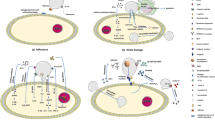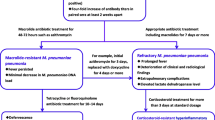Abstract
Recently, lytic bacteriophages (phages) have been focused on treating bacterial infectious diseases. We investigated the protective efficacy of a novel Pseudomonas aeruginosa phage, PA1Ø, in normal and neutropenic mice. A lethal dose of P. aeruginosa PAO1 was administered via the intraperitoneal route and a single dose of PA1Ø with different multiplicities of infection (MOI) was treated into infected mice. Immunocompetent mice infected with P. aeruginosa PAO1 were successfully protected by PA1Ø of 1 MOI, 10 MOI or 100 MOI with 80% to 100% survival rate. No viable bacteria were found in organ samples after 48 h of the phage treatment. Phage clearing patterns were different in the presence or absence of host bacteria but PA1Ø disappeared from all organs after 72 h except spleen in the presence of host bacteria. On the contrary, PA1Ø treatment could not protect neutropenic mice infected with P. aeruginosa PAO1 even though could extend their lives for a short time. In in vitro phage-neutrophil bactericidal test, a stronger bactericidal effect was observed in phage-neutrophil co-treatment than in phage single treatment without neutrophils, suggesting phage-neutrophil co-work is essential for the efficient killing of bacteria in the mouse model. In conclusion, PA1Ø can be possibly utilized in future phage therapy endeavors since it exhibited strong protective effects against virulent P. aeruginosa infection.
Similar content being viewed by others
References
Ahmad, S.I. 2002. Treatment of post-burns bacterial infections by bacteriophages, specifically ubiquitous Pseudomonas spp. notoriously resistant to antibiotics. Med. Hypotheses 58, 327–331.
Akinyemi, K.O., W. Philipp, W. Beyer, and R. Bohm. 2010. Application of phage typing and pulsed-field gel electrophoresis to analyse Salmonella enterica isolates from a suspected outbreak in Lagos, Nigeria. J. Infect. Dev. Ctries. 4, 828–833.
Biswas, B. 2002. Bacteriophage therapy rescues mice bacteremic from a clinical isolate of vancomycin-resistant Enterococcus faecium. Infect. Immun. 70, 204–210.
Borysowski, J. and A. Gorski. 2008. Is phage therapy acceptable in the immunocompromised host? Int. J. Infect. Dis. 12, 466–471.
Bullwinkle, T.J. and G.B. Koudelka. 2011. The lysis-lysogeny decision of bacteriophage 933W: a 933W repressor-mediated long-distance loop has no role in regulating 933W PRM activity. J. Bacteriol. 193, 3313–3323.
Capparelli, R., N. Nocerino, M. Iannaccone, D. Ercolini, M. Parlato, M. Chiara, and D. Iannelli. 2010. Bacteriophage therapy of Salmonella enterica: a fresh appraisal of bacteriophage therapy. J. Infect. Dis. 201, 52–61.
Capparelli, R., M. Parlato, G. Borriello, P. Salvatore, and D. Iannelli. 2007. Experimental phage therapy against Staphylococcus aureus in mice. Antimicrob. Agents Chemother. 51, 2765–2773.
Carlton, R.M. 1999. Phage therapy: past history and future prospects. Arch. Immunol. Ther. Exp. (Warsz). 47, 267–274.
Comeau, A.M., F. Tetart, S.N. Trojet, M.F. Prere, and H.M. Krisch. 2007. Phage-Antibiotic Synergy (PAS): beta-lactam and quinolone antibiotics stimulate virulent phage growth. PLoS One. 2, e799.
Ferrante, A. and Y.H. Thong. 1978. A rapid one-step procedure for purification of mononuclear and polymorphonuclear leukocytes from human blood using a modification of the Hypaque-Ficoll technique. J. Immunol. Methods 24, 389–393.
Fu, W., T. Forster, O. Mayer, J.J. Curtin, S.M. Lehman, and R.M. Donlan. 2010. Bacteriophage cocktail for the prevention of biofilm formation by Pseudomonas aeruginosa on catheters in an in vitro model system. Antimicrob. Agents Chemother. 54, 397–404.
Goode, D., V.M. Allen, and P.A. Barrow. 2003. Reduction of experimental Salmonella and Campylobacter contamination of chicken skin by application of lytic bacteriophages. Appl. Environ. Microbiol. 69, 5032–5036.
Heo, Y.J., Y.R. Lee, H.H. Jung, J. Lee, G. Ko, and Y.H. Cho. 2009. Antibacterial efficacy of phages against Pseudomonas aeruginosa infections in mice and Drosophila melanogaster. Antimicrob. Agents Chemother. 53, 2469–2474.
Housby, J.N. and N.H. Mann. 2009. Phage therapy. Drug Discov. Today 14, 536–540.
Hughes, W.T., D. Armstrong, G.P. Bodey, E.J. Bow, A.E. Brown, T. Calandra, R. Feld, P.A. Pizzo, K.V. Rolston, J.L. Shenep, and L.S. Young. 2002. 2002 guidelines for the use of antimicrobial agents in neutropenic patients with cancer. Clin. Infect. Dis. 34, 730–751.
Kalmar, J.R., R.R. Arnold, M.L. Warbington, and M.K. Gardner. 1988. Superior leukocyte separation with a discontinuous one-step Ficoll-Hypaque gradient for the isolation of human neutrophils. J. Immunol. Methods 110, 275–281.
Kocharunchitt, C., T. Ross, and D.L. McNeil. 2009. Use of bacteriophages as biocontrol agents to control Salmonella associated with seed sprouts. Int. J. Food Microbiol. 128, 453–459.
Kumari, S., K. Harjai, and S. Chhibber. 2009. Bacteriophage treatment of burn wound infection caused by Pseudomonas aeruginosa PAO in BALB/c Mice. Am. J. Biomed. Sci. 385–394.
Kutateladze, M. and R. Adamia. 2008. Phage therapy experience at the Eliava Institute. Med. Mal. Infect. 38, 426–430.
Levin, B.R. and J.J. Bull. 2004. Population and evolutionary dynamics of phage therapy. Nat. Rev. Microbiol. 2, 166–173.
McVay, C.S., M. Velasquez, and J.A. Fralick. 2007. Phage therapy of Pseudomonas aeruginosa infection in a mouse burn wound model. Antimicrob. Agents Chemother. 51, 1934–1938.
Merabishvili, M., J.P. Pirnay, G. Verbeken, N. Chanishvili, M. Tediashvili, N. Lashkhi, T. Glonti, V. Krylov, J. Mast, L. van Parys, and et al. 2009. Quality-controlled small-scale production of a well-defined bacteriophage cocktail for use in human clinical trials. PLoS One. 4, e4944.
O’Flynn, G., R.P. Ross, G.F. Fitzgerald, and A. Coffey. 2004. Evaluation of a cocktail of three bacteriophages for biocontrol of Escherichia coli O157:H7. Appl. Environ. Microbiol. 70, 3417–3424.
Preisner, O., R. Guiomar, J. Machado, J.C. Menezes, and J.A. Lopes. 2010. Application of Fourier transform infrared spectroscopy and chemometrics for differentiation of Salmonella enterica serovar Enteritidis phage types. Appl. Environ. Microbiol. 76, 3538–3544.
Repine, J.E., C.C. Clawson, and F.C. Goetz. 1980. Bactericidal function of neutrophils from patients with acute bacterial infections and from diabetics. J. Infect. Dis. 142, 869–875.
Reynolds, A., C.R. Moffatt, A. Dyda, R.L. Hundy, A.L. Kaye, R. Krsteski, S. Rockliff, R. Kampen, P.M. Kelly, and E.D. O’Brien. 2010. An outbreak of gastroenteritis due to Salmonella Typhimurium phage type 170 associated with consumption of a dessert containing raw egg. Commun. Dis. Intell. 34, 329–333.
Satapathy, A.K. and C.C. Richardson. 2011. The glutamate switch of bacteriophage T7 DNA helicase: role in coupling NTP and DNA binding to NTP hydrolysis. J. Biol. Chem. 286, 23113–23120.
Sillankorva, S., E. Pleteneva, O. Shaburova, S. Santos, C. Carvalho, J. Azeredo, and V. Krylov. 2010. Salmonella Enteritidis bacteriophage candidates for phage therapy of poultry. J. Appl. Microbiol. 108, 1175–1186.
Uchiyama, J., Y. Maeda, I. Takemura, R. Chess-Williams, H. Wakiguchi, and S. Matsuzaki. 2009. Blood kinetics of four intraperitoneally administered therapeutic candidate bacteriophages in healthy and neutropenic mice. Microbiol. Immunol. 53, 301–304.
Usher, L.R., R.A. Lawson, I. Geary, C.J. Taylor, C.D. Bingle, G.W. Taylor, and M.K. Whyte. 2002. Induction of neutrophil apoptosis by the Pseudomonas aeruginosa exotoxin pyocyanin: a potential mechanism of persistent infection. J. Immunol. 168, 1861–1868.
Wang, J., B. Hu, M. Xu, Q. Yan, S. Liu, X. Zhu, Z. Sun, E. Reed, L. Ding, J. Gong, Q.Q. Li, and J. Hu. 2006. Use of bacteriophage in the treatment of experimental animal bacteremia from imipenem-resistant Pseudomonas aeruginosa. Int. J. Mol. Med. 17, 309–317.
Waseh, S., P. Hanifi-Moghaddam, R. Coleman, M. Masotti, S. Ryan, M. Foss, R. MacKenzie, M. Henry, C.M. Szymanski, and J. Tanha. 2010. Orally administered P22 phage tailspike protein reduces Salmonella colonization in chickens: prospects of a novel therapy against bacterial infections. PLoS One. 5, e13904.
Watanabe, R., T. Matsumoto, G. Sano, Y. Ishii, K. Tateda, Y. Sumiyama, J. Uchiyama, S. Sakurai, S. Matsuzaki, S. Imai, and K. Yamaguchi. 2007. Efficacy of bacteriophage therapy against gut-derived sepsis caused by Pseudomonas aeruginosa in mice. Antimicrob. Agents Chemother. 51, 446–452.
Weber-Dabrowska, B., M. Zimecki, M. Mulczyk, and A. Gorski. 2002. Effect of phage therapy on the turnover and function of peripheral neutrophils. FEMS Immunol. Med. Microbiol. 34, 135–138.
Whelan, J., H. Noel, I. Friesema, A. Hofhuis, C.M. de Jager, M. Heck, A. Heuvelink, and W. van Pelt. 2010. National outbreak of Salmonella Typhimurium (Dutch) phage-type 132 in the Netherlands, October to December 2009. Euro. Surveill. 15.
Zilberberg M.D., J. Chen, S.H. Mody, A.M. Ramsey, and A.F. Shorr. 2010. Imipenem resistance of Pseudomonas in pneumonia: a systematic literature review. BMC Pulm. Med. 10, 45.
Author information
Authors and Affiliations
Corresponding author
Additional information
These authors contributed equally to this work.
Rights and permissions
About this article
Cite this article
Tiwari, B.R., Kim, S., Rahman, M. et al. Antibacterial efficacy of lytic Pseudomonas bacteriophage in normal and neutropenic mice models. J Microbiol. 49, 994–999 (2011). https://doi.org/10.1007/s12275-011-1512-4
Received:
Accepted:
Published:
Issue Date:
DOI: https://doi.org/10.1007/s12275-011-1512-4




